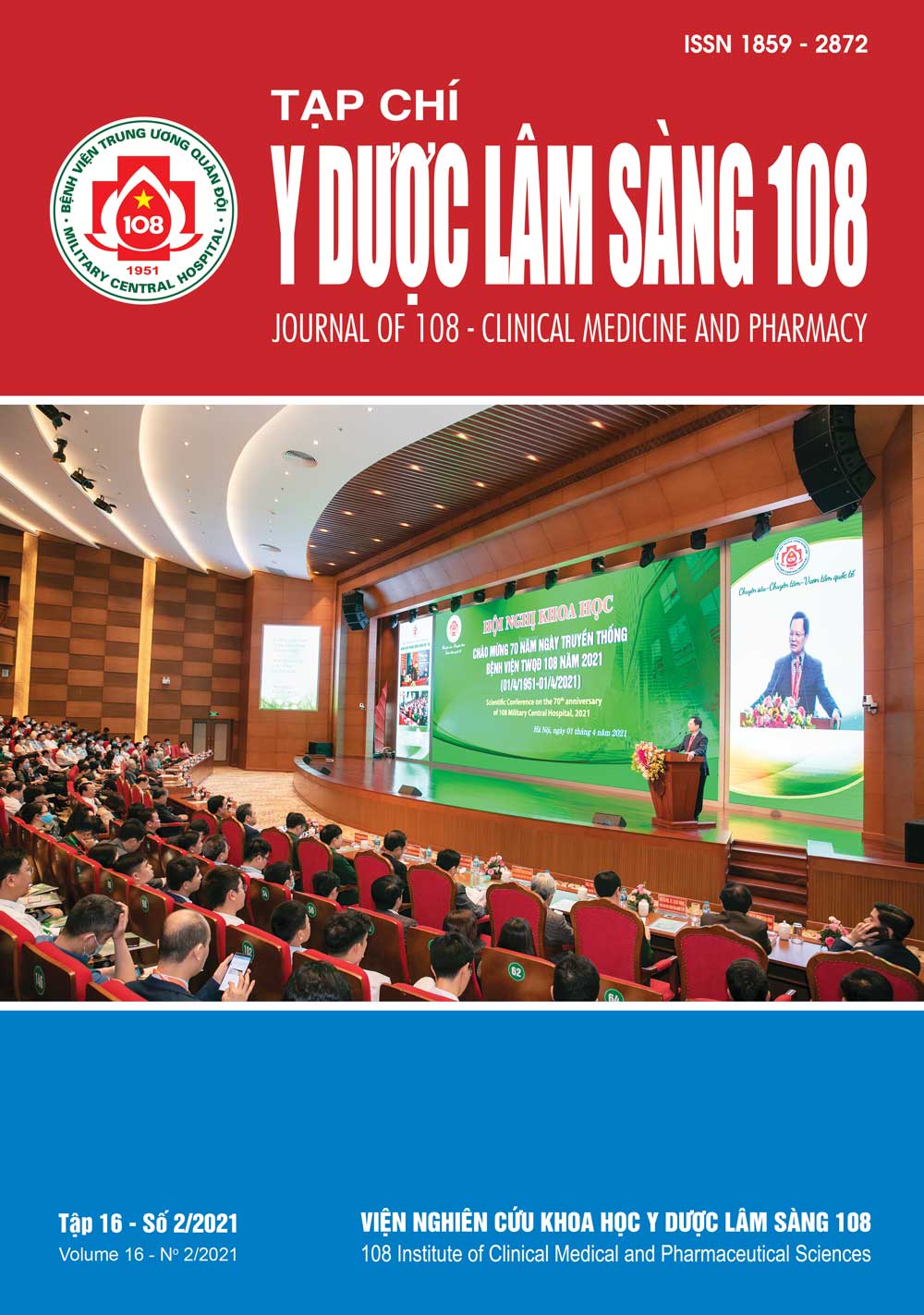Orbital tumors treated using transcranial approach
Main Article Content
Keywords
Abstract
Objective: To evaluate the surgical results of transcranial approaches for orbital tumors. Subject and method: A prospective and descriptive study, 57 patients with orbital tumors who underwent surgery at the Neurosurgery Department of ChoRay Hospital from 01/2017 to 09/2019. We descriptived clinical features of orbital tumors, which diagnosis was made by MRI. All patients were operated by transcranial appoaches. The post-operative results were evaluated by neuroophthalmological improvability, total tumoral resection and complications. Result: Mean age of the 27 male (47.4%) and 30 female (52.6%) patient was 43.5 ± 15.2 years (ranging 6 - 72 years). The most common presenting symptoms were exophthalmos in 57 patients (100%), decreased visual acuity (75.4%), pain (26.3%), optic disc atrophy and visual field defect (17.5%). In 21 (36.8%) cases, the tumors were intraconal, extraconal (36.8%) and intracanalicular (26.4%). The mean diameter of orbital tumors was 37.6 ± 12.8mm (18 - 85mm). The most common lesion types were optic nerve sheath meningioma (21.1%), Schwannoma (14%), carvernous hemangioma and carcinoma (10.5%), mucocele (8.8%). Total resection was achieved in 34 patients (59.6%) while subtotal resection was 36.8%. None of the patients died as a result of the surgery and there were few complications: seven patients (12.3%) showed worse ophthalmologic outcome, this group included of optic nerve sheath meningiomas and optic glioma. 16 patients (28.1%) had ptosis. Follow-up time ranged between 9 and 40 months (mean 24 months). 75.5% of the patients showed total protosis improverment, 56.4% of the patients showed visual acuity improvement. All patients who had post-op ptosis were improved. Recurent tumors (3.8%). Conclusion: Transcranial approach for orbital tumors is an effective approach for the management of both intraconal and extraconal tumors. The effectiveness is clearly demonstrated apex tumors, tumors involve of the optic nerve or the lesions are superior to the optic nerve.
Article Details
References
2. Huỳnh Lê Phương (2012) U hậu nhãn cầu: Kinh nghiệm chẩn đoán và điều trị phẫu thuật. Y Học Thành Phố Hồ Chí Minh, 16(4): 273-281.
3. Liu Y, Ma JR, Xu XL (2012) Transcranial surgery through pterional approach for removal of cranio-orbital tumors by an interdisciplinary team of nurosurgeons and ophthalmologists. Int J Ophthalmol 5(2): 212-216.
4. Margalit N, Ezer H, Fliss DM, Naftaliev E, Nossek E, Kesler A (2007) Orbital tumors treated using transcranial approaches: Surgical technique and neuroophthalmogical results in 41 patients. Neurosurg Focus 23(5): 11.
5. Montano N, Lauretti L, Fernandez (2018) Orbital tumors: Report of 70 surgically treated cases. World Neurosurgery: 1-10.
6. Park HJ, Yang SH, Kim IS, Sung JH (2008) Surgical treatment of orbital tumors at a single institution. J Korean Neurosurg Soc 44: 146-150.
7. Srinivasan A, Bilyk JR (2018) Transcranial approaches to the orbit. International ophthalmology clinics 58(2): 101-110.
8. Troude L, Bernard F, Roche PH (2017) The medial orbito-frontal approach for orbital tumors: a How I do it. Acta Neurochir 159: 2223-2227.
 ISSN: 1859 - 2872
ISSN: 1859 - 2872
